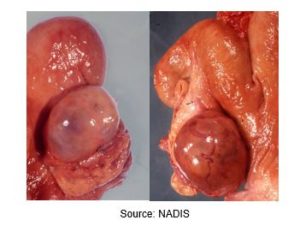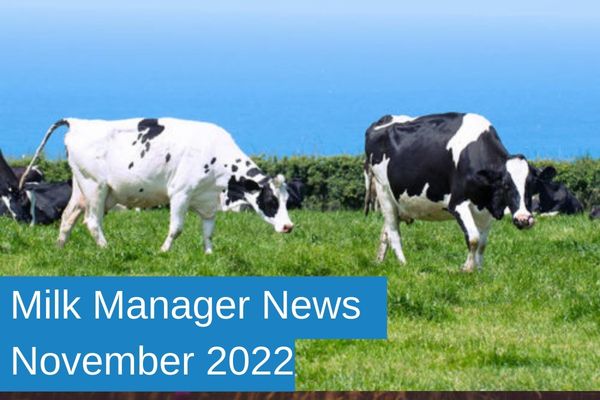Milk Manager News November 2022 – Cystic Ovaries: Causes, Prevention and Treatment
14 November 2022Cystic Ovaries: Causes, Prevention and Treatment
Cystic ovaries are most common in the first two months after calving when most health issues occur, and cows are under metabolic stress. The condition contributes to economic loss in the dairy herd by increasing days open and is due to disruption of the normal hormonal systems that control ovarian function, preventing ovulation.
Cysts can either be classified as follicular or luteal and are fluid-filled structures greater than 2.5cm in diameter, which are present on the ovary for over seven days. Cysts are usually accompanied by abnormal oestrus behaviour. Luteal cysts are the most common, where cows do not show any signs of heat. On the other hand, a cow with a follicular cyst will show excessive bulling behaviour, coming into heat every two to three days. Alternatively, cows may show shortened oestrus intervals.
A thin-walled follicular cyst (left) and a thicker walled luteal cyst (right)
Causes
There are many suggested causes of cystic ovaries, but the most common cause is thought to be a lack of dietary energy, negative energy balance and rapid weight loss. This energy imbalance is thought to interrupt the hormonal signals that pass between the ovary and the brain to stimulate egg release. Uterine infection and inflammation can also affect hormone signals from the ovary to the brain, preventing egg release.
Other suggested causes include calving difficulties, twinning, retained foetal membranes, high milk yields and stress factors such as lameness, poor cubicle comfort and mixing of cows. Older cows are thought to be more susceptible and once a cow has been cystic, she is more likely to have a recurrence. Genetics also plays a part, being more common in the Holstein breed, with a low to moderate hereditary. The incidence may also be greater after a period of heat stress.
Prevention
Good management and nutrition during the dry period are vital to ensure that cows calve down at the target body condition score of 3 and do not gain excessive weight during the dry period. Reducing the incidence of transition diseases must also be a key focus, along with adequate nutrition in early lactation to minimise condition loss and the extent of negative energy balance. This includes ensuring appropriate stocking densities for the facilities to allow adequate feeding space to maximise intakes and provide comfortable, available cubicle space.
Treatment
Early detection is by ultrasound or manual palpation by your vet. Early hormonal treatment of cystic ovaries is vital to correct the condition and get cows cycling and back in calf. Progesterone, prostaglandin and gonadotrophin releasing hormones (GnRH) are the main hormonal treatments and the hormone used will depend on the type of cyst.
Cysts will rarely resolve by themselves. As cystic cows do not come into heat when expected, good record keeping can help to identify affected cows. The quicker they can be identified and presented for veterinary examination the quicker normal oestrous cycles can be resumed. Conception rates after treatment are likely to be reduced and these cows typically require more services per conception. Chronically cystic cows should be culled.
All cows should be seen by a vet at three to four weeks post-calving to check for uterine infection and whether the cow has ovulated. A further check should be carried out after the end of the voluntary waiting period if she has not been seen bulling. If the incidence of cystic ovaries is more than 5%, investigation should be carried out, particularly focusing on nutrition and management of transition cows.
lorna.macpherson@sac.co.uk; 07760 990901
Sign up to the FAS newsletter
Receive updates on news, events and publications from Scotland’s Farm Advisory Service


